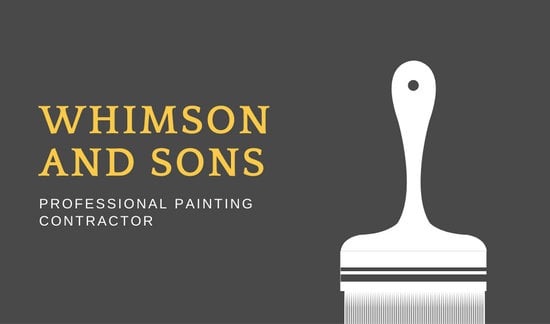Understand How Seasonal Conditions Impact The Success Of Industrial Exterior Paint And Learn The Excellent Durations To Assure Lasting Results For Your Project
Understand How Seasonal Conditions Impact The Success Of Industrial Exterior Paint And Learn The Excellent Durations To Assure Lasting Results For Your Project
Blog Article
Write-Up Produced By-Doherty Urquhart
When you're preparing an industrial external paint task, seasonal elements can make or damage your results. You'll wish to take into consideration exactly how temperature and moisture influence paint application and drying times. Picking the appropriate period can ensure your paint sticks correctly and lasts longer. But which periods are really the best for this sort of job? Let's explore the key elements that can influence your project's success.
The Effect of Temperature Level on Paint Application
When you're intending a business exterior paint job, the temperature can substantially influence just how well the paint adheres and dries out.
Preferably, you intend to paint when temperatures range in between 50 ° F and 85 ° F. If it's as well cold, the paint may not cure appropriately, resulting in concerns like peeling or fracturing.
On the flip side, if it's too warm, the paint can dry out also swiftly, avoiding proper adhesion and leading to an uneven coating.
You need to additionally think about the time of day; early morning or late afternoon supplies cooler temperatures, which can be a lot more desirable.
Constantly examine the maker's recommendations for the particular paint you're using, as they often supply advice on the optimal temperature array for optimum results.
Moisture and Its Impact on Drying Times
Temperature isn't the only environmental variable that affects your commercial external paint project; humidity plays a substantial function also. High moisture levels can reduce drying out times drastically, affecting the general top quality of your paint job.
When the air is saturated with dampness, the paint takes longer to heal, which can bring about problems like bad attachment and a higher danger of mildew development. If you're painting on a specifically humid day, be prepared for extensive wait times between layers.
It's important to check regional weather and plan accordingly. Preferably, go for moisture degrees between 40% and 70% for optimal drying out.
Keeping https://www.21oak.com/home-maintenance/what-is-eggshell-paint/ consider mind guarantees your project remains on track and delivers a long-term finish.
Best Seasons for Commercial Outside Paint Projects
What's the best season for your industrial exterior painting projects?
Spring and early fall are generally your best bets. During these periods, temperatures are light, and humidity levels are often lower, developing excellent conditions for paint application and drying out.
Avoid summertime's intense heat, which can create paint to dry too quickly, causing inadequate adhesion and finish. In a similar way, winter months's chilly temperature levels can prevent proper drying and curing, taking the chance of the longevity of your paint work.
Aim for days with temperatures between 50 ° F and 85 ° F for optimal outcomes. Remember to examine the neighborhood weather prediction for rainfall, as damp conditions can destroy your project.
Preparation around these factors ensures your paint task runs smoothly and lasts much longer.
Final thought
Finally, intending your industrial exterior painting jobs around seasonal factors to consider can make a considerable distinction in the result. By organizing what is surface preparation in painting during the optimal temperatures and humidity degrees, you'll make sure much better bond and drying times. Keep in mind to watch on local weather prediction and select the right time of year-- springtime and early autumn are your best bets. Taking these steps will certainly assist you achieve a durable and professional finish that lasts.
